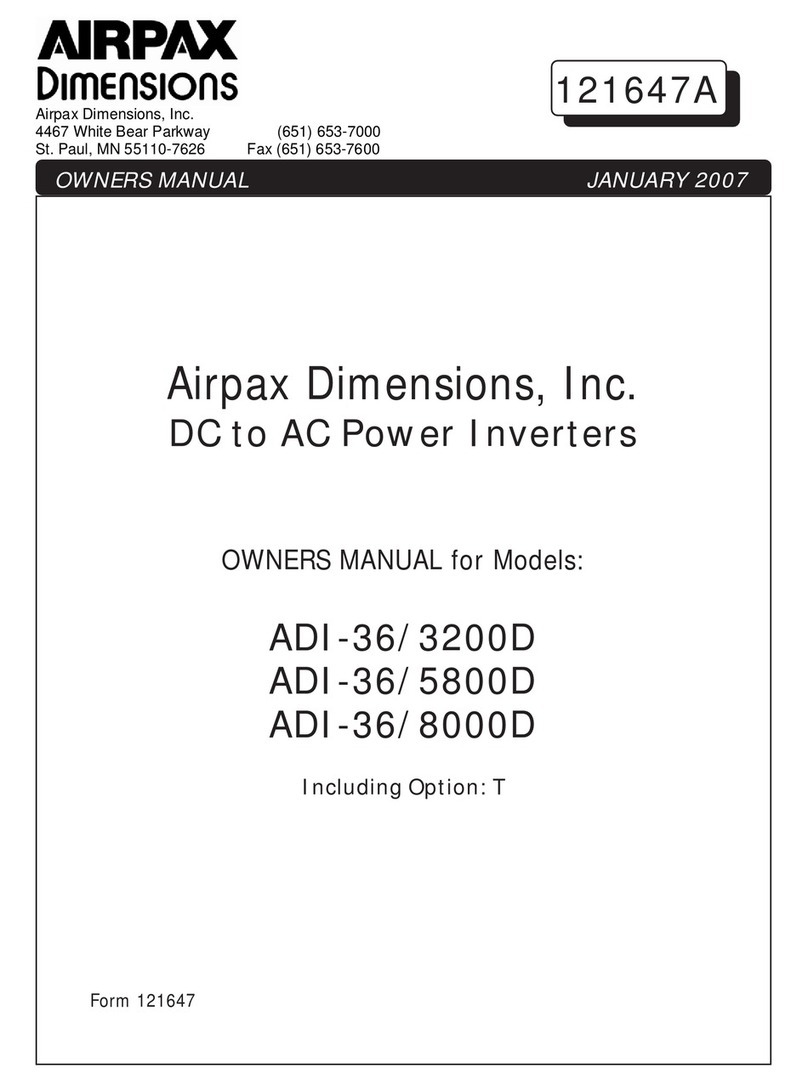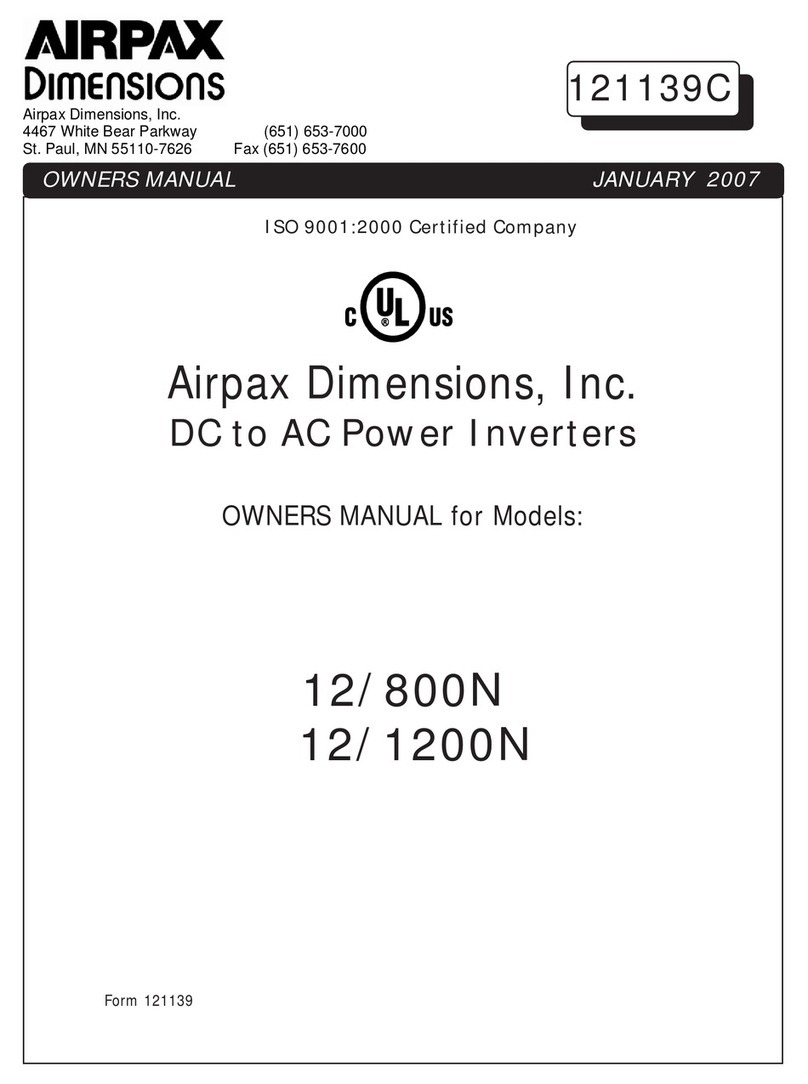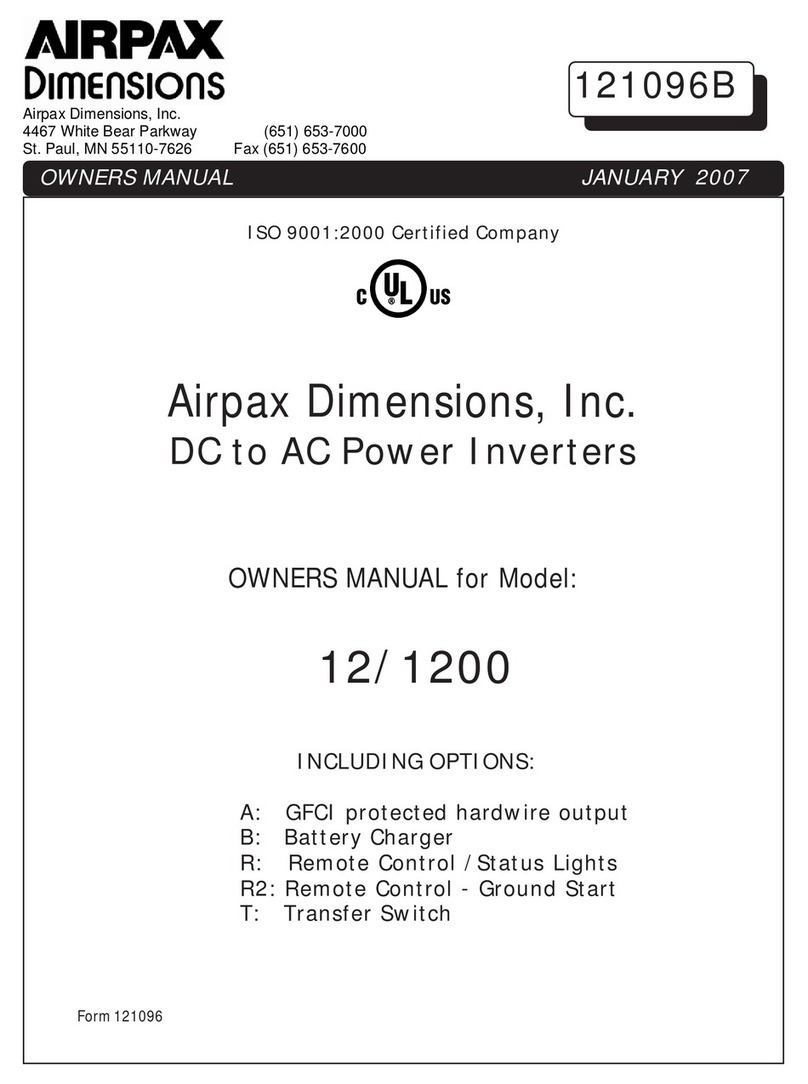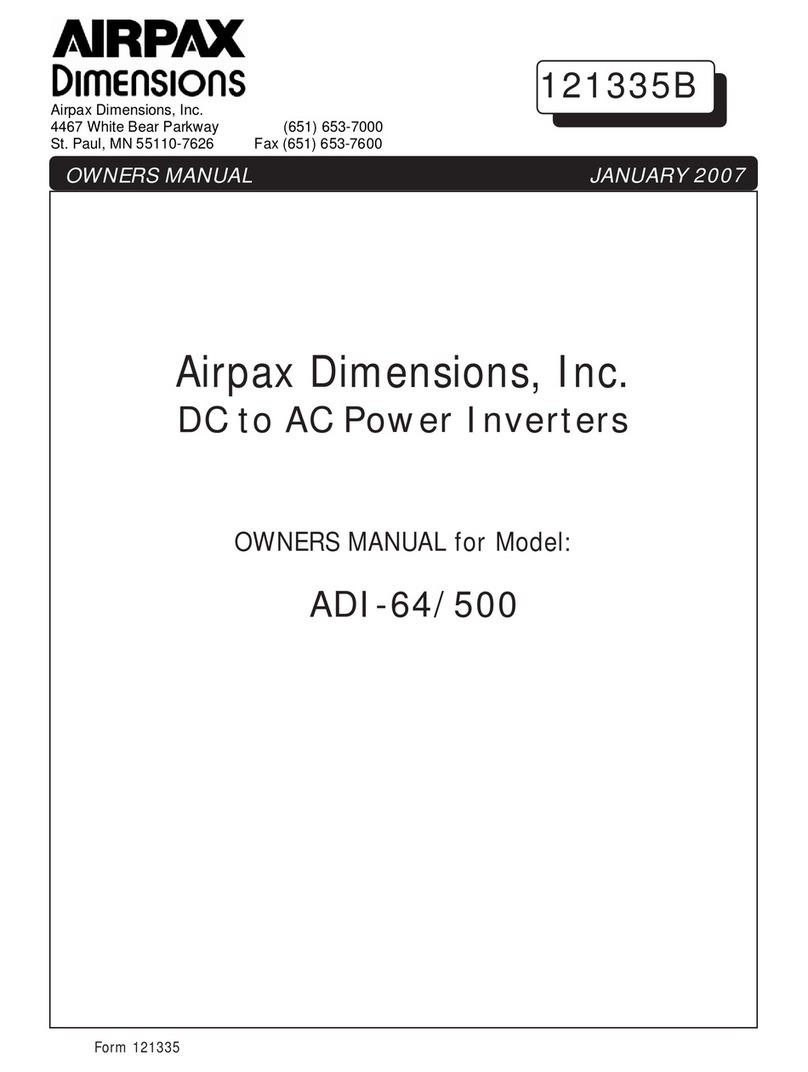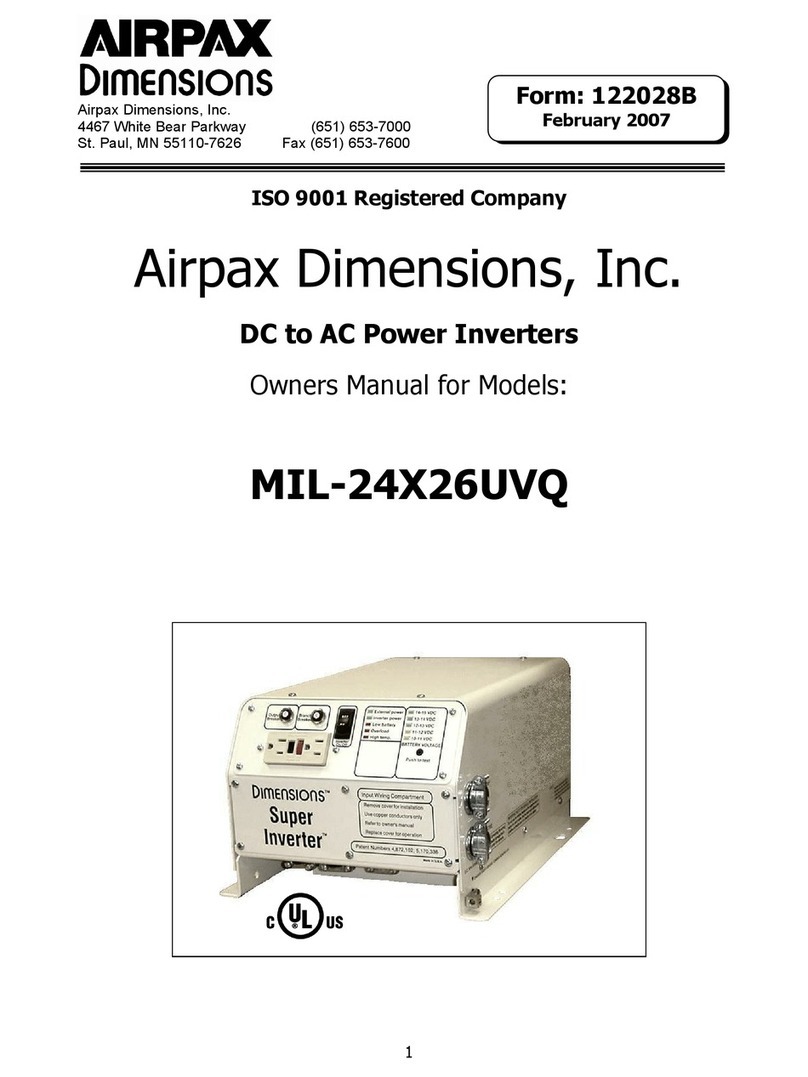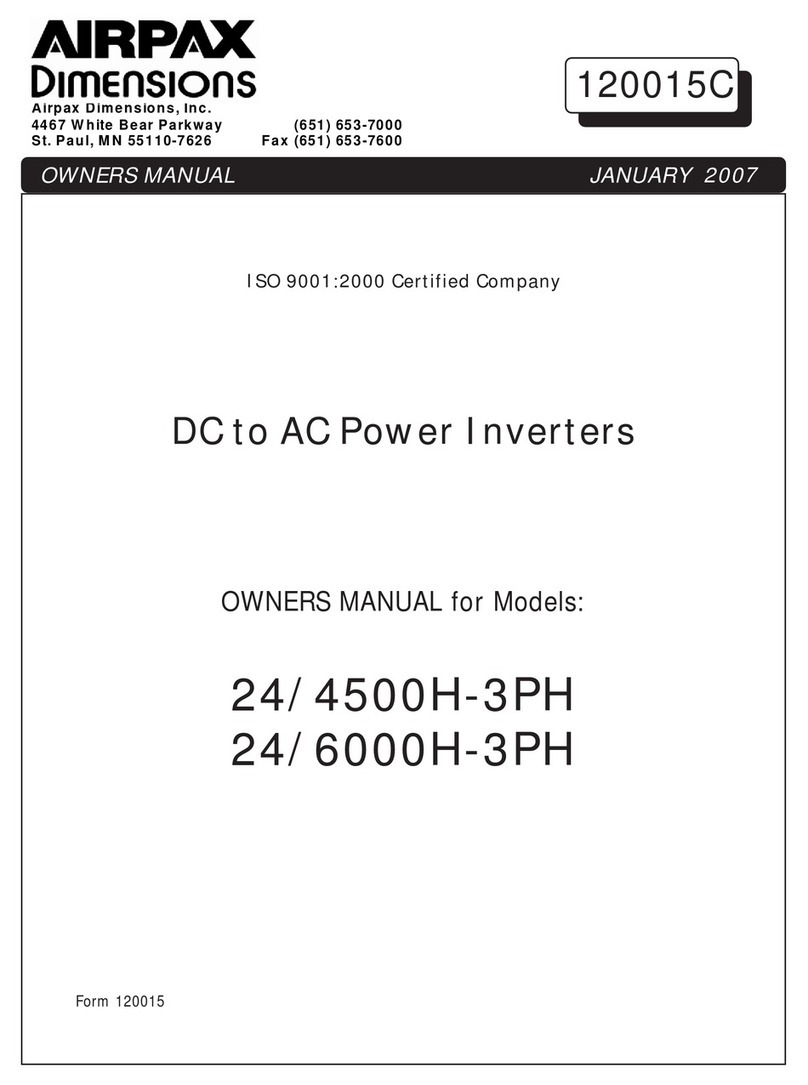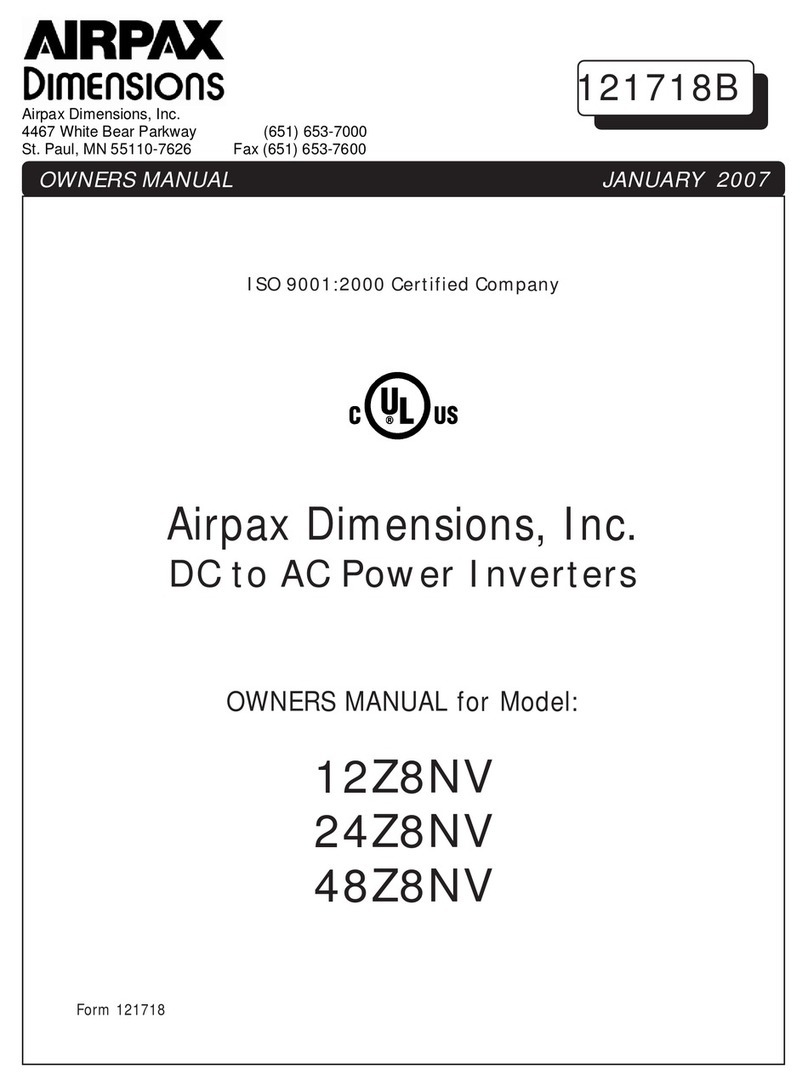
DC Input Wire Lengths (maximum)
and Fusing Guide
Distance(feet)
Model 1-10 11-15 16-20
24/2600 2 ga 2 ga 1/0 ga
24/3200 1/0 ga 1/0 ga 1/0 ga
AWG: 1/0 2
Fuse: 350A 250A
3.05.3 NOTE: Using smaller input cable or
peak longerlengthwillgreatlydegradetheinverter
performance.
IMPORTANT NOTE FOR VEHICLE
INSTALLATION:
Do not use the vehicle
chassis as the negative return in place of a return
cable. Use the same size cable as the positive
connectionand rundirectly tothe battery/alterna-
tor.
3.05.4Install the wiresat the battery,inverter
and then fuse holder. Make sure that good, clean
connections are made. Use care not to touch the
positiveandnegativewirestogether. Thiswillresult
in a violent spark and could result in exploding
batteriesandfire.
3.05.5
CAUTION:
Connecting the inverter in-
correctly to the battery will cause damage that is
notcoveredunderwarranty.
3.05.6Thebatteryinputterminalsarelocatedin
the wiring compartment. A mounting spark may
resultwhenconnectingthebattery wire,duetoan
initialchargingof the internal input capacitor.
3.06 Remote Switch for Inverter
Operation - Fig. 1
3.06.1 All material used for the remote
switch should be U.L. listed and installed per low
voltage, Class 2, wiring code.
3.06.2 A remote switch may be connected
tothevioletwiremarked"RemoteSwitchHookup"
inthewiringcompartment.Removethevioletwire
from the +24 VDC battery positive input terminal.
Connect the violet wire to the load terminal of a
an external AC power source is applied to the
inverter’s AC outlet or its hardwire output.
CAUTION:
Besure the inverter'scircuitbreakeror
fuseare turned"OFF" duringinstallation.
NOTE: All wiring must follow the National Electric
Code,Provincial orothercodes ineffect atthe time
of installation, regardless of suggestions in this
manual. All wires should be copper conductors.
3.03 Mounting
3.03.1 Locate a suitable, secure vertical or
horizontalmountingsurface as close to the battery
as possible without being in the same air tight
compartment. The maximum recommended dis-
tance between the mounting location and the
battery is 20 feet.
CAUTION: If mounting the inverter on a vertical
surface,mountwiththefrontcontrolpanelpointing
down.
3.03.2The location should provide adequate
ventilation and clearance to maintain room tem-
perature during operation. At least 1/2 inch of
clearance is required on all sides.
3.03.3 Secure the unit with 1/4 inch screws
or bolts in the mounting slots on the flanges of the
chassis.
3.04 Chassis Bonding Lug - FIG. 1
3.04.1 Connect a #8 gauge or greater cop-
per wire between the bonding lug on the inverter
and the earth grounding system or the vehicle
chassis.
3.05 Battery Cabling - FIG. 1
3.05.1
CAUTION:
Assure that hydrogen gas
doesnotaccumulatenearthebatterybykeepingthe
area well ventilated. A spark may result when con-
necting the final battery wiring due to the initial
charging of the internal input capacitor.
3.05.2 Use stranded copper wire between
the battery and inverter as indicated. A line fuse
must be installed between the battery and the
inverter. U.L. requires that the fuse be within 18
inches of the battery.
Page 3
